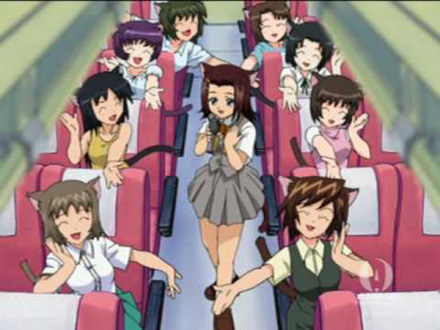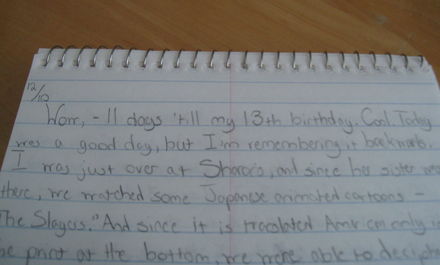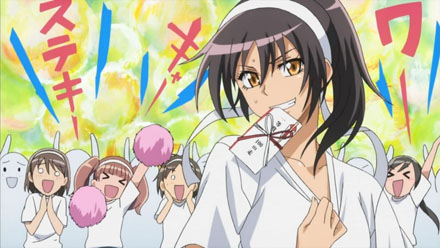 Note: this post is also on Japanator as a feature.
Note: this post is also on Japanator as a feature.
When my lolita friend Bune suggested I check out Kaichou wa Maid Sama! (President is a Maid!) I was expecting a bubbly shoujo comedy-romance. I was half right.
The leading lady, Ayuzawa Misaki, is anything but bubbly. The class president who works as a maid cafe for plot-convenient financial reasons, Misaki is poised, authoritative, and physically strong. The humor comes from the plot point that, as the female student president of a mostly male school, she can’t let anyone know about her part time job. (The romance comes from one particularly hot classmate who finds out and promises to keep it on the DL.)
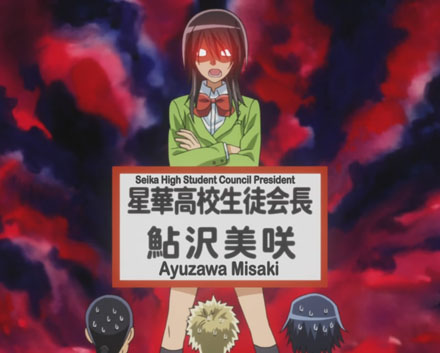 When the series started, I thought Misaki’s ability to verbally and physically overtake her male classmates would soon give in to feminine vulnerability as soon as she found a love interest — that she’s just a tsundere that needed a man to set her straight. However, I’m halfway through the series and no man can conquer this powerhouse of a character (and what’s better, several of the storylines involve Misaki teaching her female friends to stick up for themselves, too). Misaki is smarter, stronger, and more articulate than every other character in the show. At the same time, she’s drawn realistically, with brown hair and eyes and a modest figure. Maid Sama! is a shoujo anime so she’s made to be a role model for girls — she’s designed for a female gaze.
When the series started, I thought Misaki’s ability to verbally and physically overtake her male classmates would soon give in to feminine vulnerability as soon as she found a love interest — that she’s just a tsundere that needed a man to set her straight. However, I’m halfway through the series and no man can conquer this powerhouse of a character (and what’s better, several of the storylines involve Misaki teaching her female friends to stick up for themselves, too). Misaki is smarter, stronger, and more articulate than every other character in the show. At the same time, she’s drawn realistically, with brown hair and eyes and a modest figure. Maid Sama! is a shoujo anime so she’s made to be a role model for girls — she’s designed for a female gaze.
I don’t think this would happen on American TV. Hollywood’s idea of a strong female character is one who is forceful during romantic encounters, basically, in regard to a male character or male gaze. We very rarely see a female gaze in American television at all. This is why it was so hard for me to accept that Misaki is strong and remains that way, whether she’s in love or not.
Why is this happening in Japan, a country we consider far more sexist than America? I found one hypothesis in Roland Kelts’ Japanamerica. Kelts observed that animes often have female or child heroes and found that this has a lot to do with Japanese identity. He interviewed anime journalist Hideki Ono, who presented his take:
“Also very Japanese, [Ono] believes, is the emphasis on female and child characters… He theorizes that Asians in general, and Japanese especially, like to have more diminutive characters performing heroic feats — David beating Goliath — primarily because they are physically smaller than other ethnicities.”
Maid Sama! fits well with this storyline, as average looking Misaki beats all the boys at the Sports Festival, files comically large stacks of paperwork in mere minutes, and gets the highest grades in the whole school, all while beating up stalkers and delinquents.
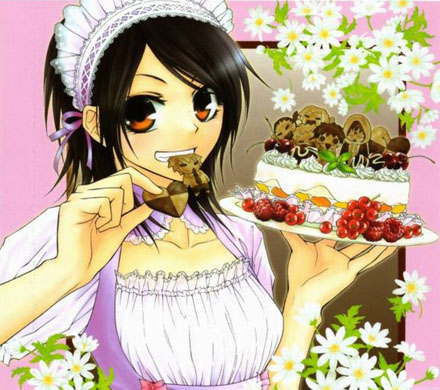 Of course, Maid Sama! is not without its subtle sexual storyline — Misaki IS a maid-cafe maid and plot points frequently refer to the various moe themes at the cafe: Glasses Girl Day, Pigtails Day, Visual Kei Day etc. But the fan service is never gratuitous, and some of the comedy comes from Misaki’s irration at having to act cutesy. If anything, the costumes and personas the maids assume on moe days show that weakness as femininity is just an act. Not to mention the parallel between the way Misaki’s male classmates are at her mercy at school, so are the male visitors to the maid cafe.
Of course, Maid Sama! is not without its subtle sexual storyline — Misaki IS a maid-cafe maid and plot points frequently refer to the various moe themes at the cafe: Glasses Girl Day, Pigtails Day, Visual Kei Day etc. But the fan service is never gratuitous, and some of the comedy comes from Misaki’s irration at having to act cutesy. If anything, the costumes and personas the maids assume on moe days show that weakness as femininity is just an act. Not to mention the parallel between the way Misaki’s male classmates are at her mercy at school, so are the male visitors to the maid cafe.
Has anyone else watched Kaichou wa Maid Sama!? I definitely recommend it, not just for the feminist critique I’ve made of it, but because it’s a refreshing slice-of-life anime far removed from the excessive fan service I’ve been rotting my brain with this anime season.


